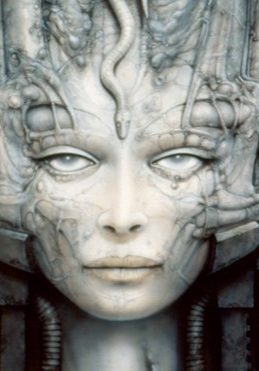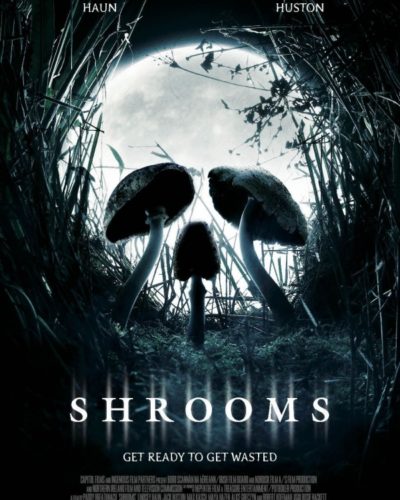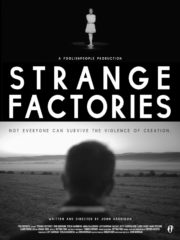The Enigmatic Lurking of Dark Star: HR Giger’s Welt
“Art is not just entertainment; it is a way of reflecting on the darkness within ourselves.” This potent sentiment echoes throughout the 2014 documentary-horror blending film, “Dark Star: HR Giger’s Welt,” directed by Belinda Sallin. The film dives deep into the genius of artist H.R. Giger, known for his surreal, spine-chilling imagery and as the visionary behind the creature designs for the “Alien” franchise. By merging the realms of documentary and horror itself, Sallin presents a portrayal of Giger’s work that feels both reverent and haunting.
Set not only in the life retrospective of Giger but within the atmospheres he crafted, “Dark Star” invites viewers into the shadowy corners of creative genius through a mix of retrospective interviews, visual explorations of Giger’s artworks, and a surreal depiction of the artist’s deeply unsettling themes. The film is not simply an analysis; it is a psychological trip through Giger’s universe, where beauty and terror intertwine.
A Breeding Ground for Unease
“Dark Star” cultivates its horror atmosphere through an ambient sense of foreboding that lingers long after the credits roll. The film transports audiences into Giger’s unnerving world, filled with his renowned biomechanical art, where the organic melds with the mechanical, creating an unsettling visual poetry that grips audiences from the very start. Using a blend of interviews, archive footage, and surreal visuals, the film reveals the dark themes that permeate Giger’s mind and work, evoking an eeriness that grips viewers.
The film employs various techniques to build its horror rather than opting for overt shocks. It carefully balances the suspense of Giger’s life story alongside the visual horrors of his art, creating a tense weave of artist and creation that showcases the duality of genius—beauty fused with darkness. Giger himself often comments on how he feels his art reflects unease and anxiety, and the film echoes this sentiment with an understated yet chilling exploration of his psyche, revealing that his fears and past traumas often inspired his work.
Visual Language of Horror
Sallin’s choice of cinematography plays a crucial role in sculpting the film’s atmospheric tension. Shadows are long, colors often washed out or dominated by dark ominous tones, inviting viewers to feel the claustrophobia of Giger’s imagination. Close-up camera angles often dominate the visuals as if they urge the audience to peer deeply into the abyss of Giger’s nightmares, revealing intricacies and grotesqueries that hint at his struggles with identity and self-creation.
Moreover, the special effects are a captivating embodiment of Giger’s style, as they reproduce the haunting qualities of his artwork. The film flaunts a variety of unsettling animations that breathe life into Giger’s drawings, making his visions sway between reality and nightmare. Each visual element is carefully crafted to contribute to a collective sense of dread, ensuring that audiences do not merely observe; they feel entrenched within Giger’s twisted reality.
The Sound of Dread
The sound design complements the visual landscape beautifully, heightening feelings of suspense and terror. The film uses a haunting score with low, resonant tones to create an atmosphere that feels achingly slow yet insidiously invasive. There are moments where silence punctuates the visuals, acting almost like an unveiled scream that prompts audiences to feel their heartbeats quicken.
Crucially, every sound effect—from the whispered conversations about Giger’s struggles with mental health to the droning sounds of machinery—acts as a conduit for fear. The clever use of sound and stark silence is heightened during moments of reflection, allowing the weight of Giger’s experiences to resonate deeply within the viewer. This blending of sound and visual stimuli wraps the viewer in a cocoon of unease, where every element is finely tuned to evoke a sense of horror sedimented within Giger’s life and art.
Characters in Confrontation
As a documentary, “Dark Star” places a heavy emphasis on character exploration, ensuring Giger himself remains at the forefront. The performances, driven largely by interviews with Giger’s peers, friends, and Giger himself, paint a complex portrait of a brilliant yet tortured artist. These individuals grapple with his memories, recounting the duality of beauty and pain, which adds depth to the human tragedy underpinning his work.
There is an undeniable authenticity in how witnesses recount their experiences with Giger, which cultivates a palpable sense of horror that transcends the screen. They don’t just narrate; they embody fear and admiration as they share their personal connections to both Giger’s life and his art. This serves to root the horror deeper, allowing audiences to understand—and almost empathize with—the profound influence of darkness in Giger’s creative endeavors.
Exploration of Horror Dimensions
“Dark Star” deftly operates within the realms of psychological horror, as it delves into Giger’s psyche and the broader implications of creating art steeped in fear. The film challenges traditional horror conventions, for it does not rely on jump scares or classic horror tropes; instead, it submerges viewers in a slow burn of psychological intrigue that raises questions about the relationship between creativity and mental struggle.
Moreover, Giger’s art draws upon elements of body horror, particularly with its exploration of themes surrounding the human form intertwined with machinery, reflecting our fears about the boundaries of the body in an age dominated by technology. This creates a chilling commentary on the modern experience, prompting audiences to engage with existential questions about identity and the human condition.
A Shattered Mirror of Society
Through its analysis of Giger’s work and life, the film presents underlying themes of alienation, the dark side of ambition, and the struggles against inner demons. Giger’s artwork, often filled with monstrous imagery, serves as a reflection of societal anxieties, confronting audiences with the uncomfortable realities of human existence. The allure of horror is well-captured, as it provides a platform for examining personal fears, many rooted in the broader canvas of the human experience.
This exploration of deeper societal issues makes “Dark Star” not just a horror experience but a vehicle for reflection and debate. The film encourages audiences to confront their anxieties and question what haunts them in the realms of art and existence, offering a powerful lens through which to view these crucial discussions.
Overall Impact and Audience Appeal
“Dark Star: HR Giger’s Welt” distinguishes itself in the horror genre by offering a reflective, psychological horror experience rather than traditional scares. It stands as a testament to the influence that H.R. Giger has had not only in the art world but upon culture at large. The film is genuinely unsettling and thought-provoking, engaging audiences with a mix of visual and auditory experiences that challenge perceptions of fear.
Horror aficionados and fans of documentary filmmaking will find this film captivating, as it entwines art and terror in compelling ways. However, casual viewers may find the film’s slow pacing and introspective nature less engaging, making it a targeted recommendation primarily for those who appreciate the marriage of art and horror.
A Glimpse into Artistic Horror
In comparison to other prominent works in the horror genre, “Dark Star” offers a unique narrative style, akin to previous documentaries like “Room 237” that reveals a deeper, unsettling perspective on a cultural artifact. While films like “Hereditary” or “The Babadook” delve into psychological horror with a narrative focus, “Dark Star” takes a reflective approach, inviting viewers to ponder rather than just react.
In conclusion, “Dark Star: HR Giger’s Welt” brilliantly combines documentary and horror, providing a nuanced reflection on the interplay of art and trauma. With its rich atmospheric detail, thoughtful cinematography, and haunting soundscape, this film resonates on multiple levels. For those prepared to confront the murky depths of the human psyche and the art that seeks to capture it, this is a profoundly impactful film experience.
**Warnings:** The film contains graphic imagery reflective of Giger’s art and discussions of mental health struggles, which may be triggering for some viewers.




